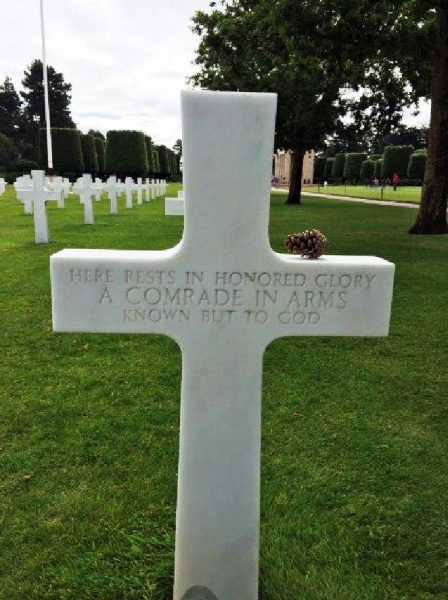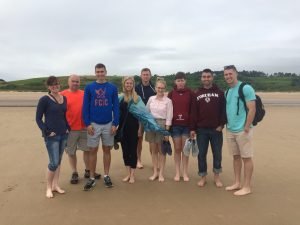
By Eric A. Behrendt
Special to The Citizen
Editor’s Note: Eric A. Behrendt is a Army Reserve Officers’ Training Corps cadet currently participating in the U.S. European Command Voluntary Internship Program.
On July 22, 2016, eight Army Reserve Officers’ Training Corps (ROTC) cadets from universities across the U.S. took to the road from Stuttgart, Germany, for a three-day staff ride to Normandy, France. Accompanied by Maj. Zach Hughes, U.S. Air Force Reserves, Maj. (Ret.) Dr. Michael Pierce, registered historian, author and Veterans of Foreign Wars Post 10810 life member, and Maj. (Ret.) Thomas Hooper, junior vice commander of VFW Post 10810, the cadets were set to experience the history and leadership challenges the Allied liberation forces faced, June 6, 1944, turning the tide of World War II.
Over the weekend, the cadets visited the strategic locations of Utah Beach, Sainte Mère Eglise, Pointe du Hoc, Omaha Beach, Arromanches, and Pegasus Bridge. Their final destination was the hallowed ground of the Normandy American Cemetery, providing a somber reality for the cadets as to what the service members faced that day, and the true costs of preserving the liberty of free people.

Scholar Soldiers
The cadets are interns assigned to Headquarters U.S. European Command at Patch Barracks. The European Command Voluntary Internship Program is primarily composed of civilian college students, with ten assignments reserved for the U.S. Army Cadet Command to be awarded to qualified applicants. The internship spans two months, from July 3 to Sept. 3, providing a valuable perspective from the Combatant Command level, before the cadets return to school for the fall semester. In 2017, six of these cadets are scheduled to receive commissions as Second Lieutenants.
Leadership at Normandy
The primary focus of the staff ride was to study the preparation, plans, and execution of Operation Overlord and to examine leadership principles and decisions that were made in the heat of battle, as well as critical links in the chain of command that went missing or became casualties.
Each cadet was given a copy of ‘The Overlord Effect’ by Dr. Pierce. This book describes the emergent leadership style of a Soldier suddenly burdened by the weight of combat and the absence of leaders in the field. Based on that understanding, each cadet examined their leadership skills as they researched historic examples to share with their peers. One famous leadership example was on Utah Beach where Brig. Gen. Roosevelt landed with his troops, being the only general to do so. Upon realizing they were several miles from their intended landing site, Roosevelt uttered the famous words, “we’ll start the war from right here!”
At the town of Arromanches, cadets focused primarily on the engineering feat of the Mulberry Harbors. The cadets were exposed to the importance logistics had on the battle and how the harbors would be the lasting outcome that ultimately fueled the war to victory. Large concrete caissons used as break waters still dot the horizon, and bridge sections litter the beach providing a constant reminder of the invasion.
In true ceremonial fashion, as the cadets began walking to the exit of the Normandy American Cemetery, in the sky above, five French fighter jets flew a low formation over the quiet field of crosses. They displayed the colors of the French national flag in a smoke trail, the jets’ proverbial salute to those who gave their lives to ensure freedom.
[slideshow_deploy id=’24304′]






